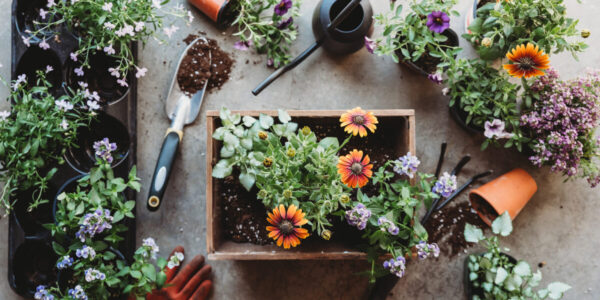
Northern California checklist March
PLANNING
• Choosing plants. Before investing in new plants, especially large trees and shrubs, determine the plants’ mature heights and widths as well as sun exposure needs; the Sunset Western Garden Book is a good place to start. Write down this information and take it with you to the nursery ― it’ll help you select the right plant for the right spot.
PLANTING
• Culinary herbs. Sunset climate zones 7-9, 14-17: As soon as frost has passed, plant a bed of herbs to use in cooking. Choose your favorites, or order a certified-organic assortment of six herbs from Mountain Valley Growers (559/338-2775). These specialty mixes include the Gourmet Herb Garden ($25), with chocolate mint, Cretan oregano, garlic chives, lemon thyme, pine-scented rosemary, and Vietnamese cilantro, and the Windowsill Herb Garden ($25), with small-space varieties. Grow them in a sunny spot and water regularly.
• Flowers. Zones 7-9, 14-17: For blooms by summer, sow seeds of alyssum, cosmos, gloriosa daisy, marigold, nasturtium, purple coneflower, spider flower (Cleome hasslerana), and sunflower. Sow them in the ground (the easiest method) or in containers, then transplant them into the ground as seedlings. Zones 1 and 2: Start seeds indoors six to eight weeks before last frost.
• Navel oranges. Zones 7-9, 14-17: For a less common variety that grows well in Northern California, try ‘Cara Cara’, which has salmon-colored flesh and is a good choice for hot inland areas; ‘Lane Late’, a sweet-tasting variety that bears fruit from April to September, later than most navels; or the very sweet ‘Trovita’, which ripens May through June and is productive in both hot valleys and cool coastal areas. Young trees in 5-gallon cans become established most quickly. All are available on dwarf or standard rootstock at nurseries statewide or from Four Winds Growers.
MAINTENANCE
• Amend soil. Zones 7-9, 14-17: Before planting new areas, amend sandy or heavy clay soils with mature compost or other fully decomposed organic material to improve soil structure and add fertility (see details in Good Earth). If you use ground bark or another raw wood product such as sawdust, ask the supplier or check the label to make sure it’s been nitrogen-stabilized. Otherwise, wood-based amendments can compete with plants for nitrogen and stunt plant growth. If the bark has not been nitrogen-stabilized, add an organic nitrogen fertilizer at planting time.
• Feed lawns. Zones 7-9, 14-17: Bent, blue, fescue, rye, and other grasses begin their spring growth spurts now. Feed with a high-nitrogen lawn fertilizer according to label directions.
DISEASE CONTROL
• Spray roses. Cool, moist weather can promote rust, a fungus that causes rust-colored pustules on leaves’ undersides. Handpick and dispose of diseased leaves. Spray the plant with a sulfur-based fungicide. When watering, avoid wetting foliage.
